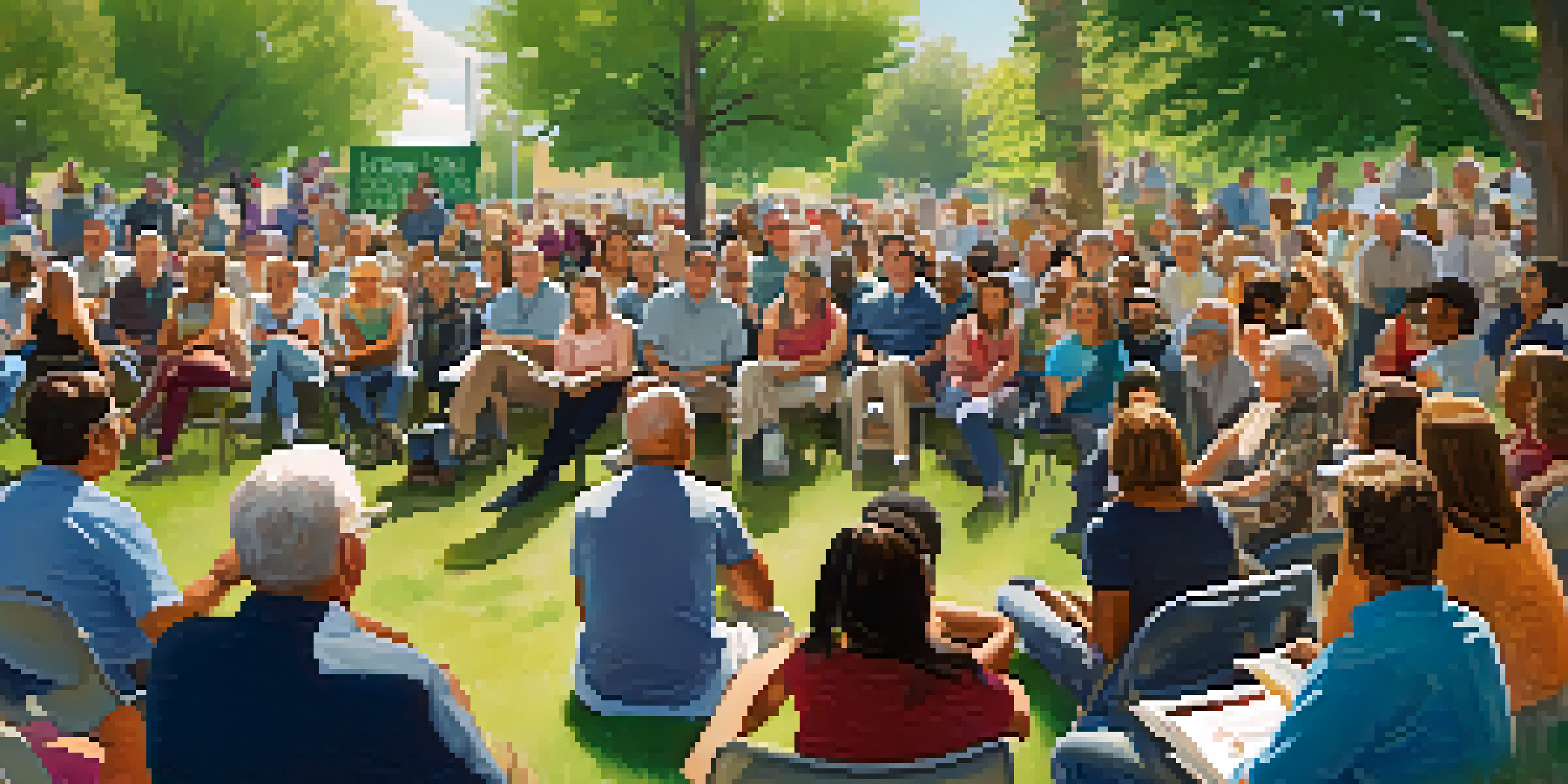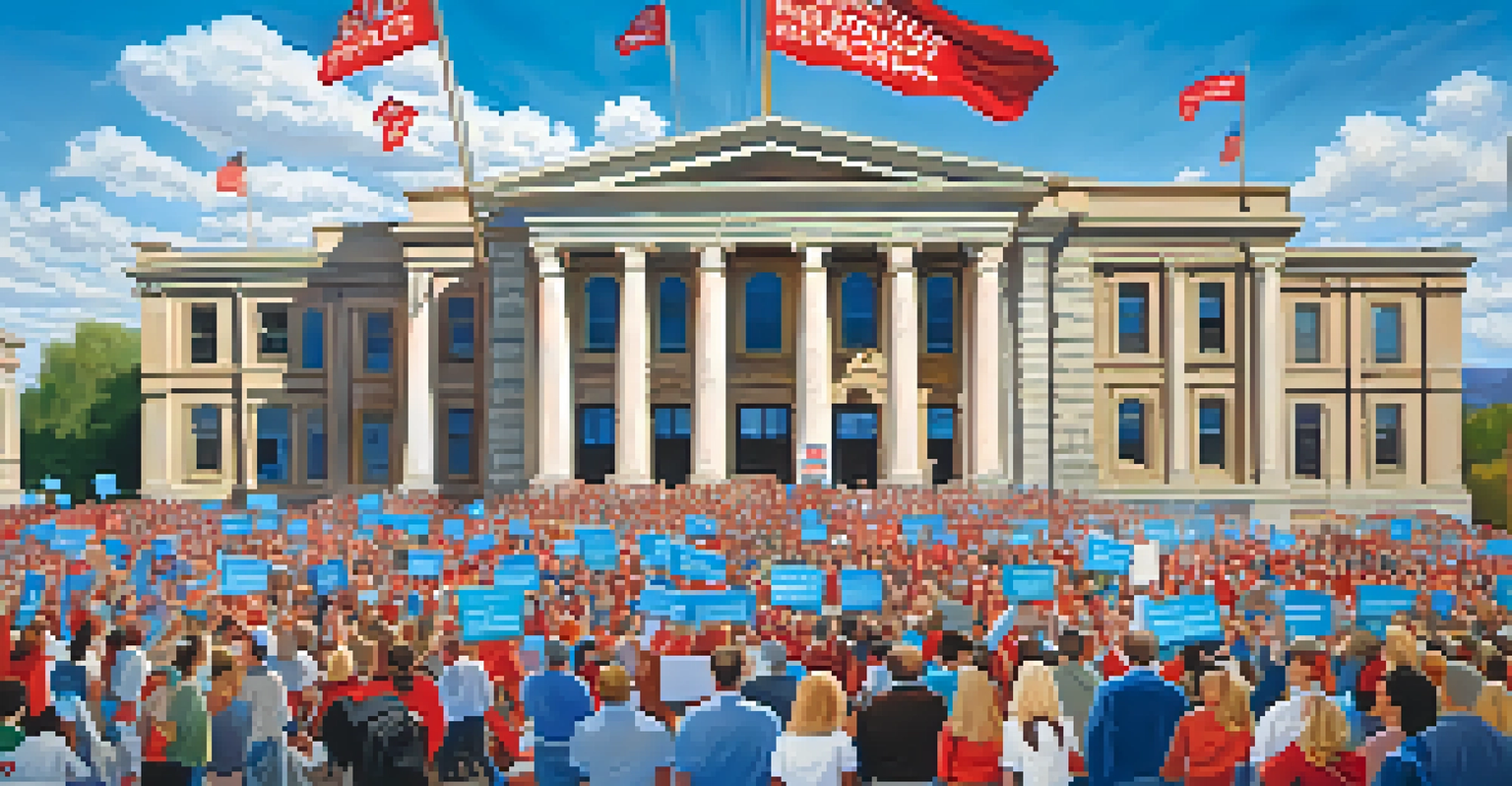Voting Trends in Utah: Analyzing Recent Election Results

Overview of Recent Election Results in Utah
Utah's recent elections have showcased significant voter engagement, reflecting the state's growing political dynamics. In the 2022 midterms, voter turnout reached approximately 54%, a notable increase compared to previous years. This surge indicates a heightened interest in local and national issues among Utah residents, sparking curiosity about the underlying factors driving this trend.
The future of our democracy depends on the engagement of our younger generations, who are proving to be the most active and passionate voters yet.
One of the standout features of these elections was the competitive nature of several key races. The gubernatorial and congressional contests drew considerable attention, compelling candidates to engage more actively with their constituents. This shift not only energized the electorate but also brought forth a more diverse range of voices and perspectives in the political dialogue.
Moreover, the demographic makeup of Utah is evolving, with younger voters and diverse communities becoming increasingly influential. This demographic shift is reshaping the political landscape, prompting candidates to address a wider array of issues, including education, healthcare, and climate change, which resonate more with these groups.
Impact of Demographics on Voting Patterns
Demographic changes in Utah have played a crucial role in shaping voting patterns over recent elections. With a growing population of millennials and Gen Z voters, there is a noticeable shift in priorities and perspectives that challenges traditional voting behaviors. These younger voters tend to prioritize issues like social justice and environmental sustainability, which are increasingly becoming central to political campaigns.

Additionally, the influx of diverse communities, including Hispanic and Asian populations, has enriched Utah's electoral landscape. This diversity brings new viewpoints and concerns to the forefront, compelling candidates to broaden their platforms. As these groups become more politically active, their influence is expected to grow, potentially altering the outcomes of future elections.
Increased Voter Engagement in Utah
Recent elections in Utah saw a notable surge in voter turnout, with approximately 54% participating, reflecting heightened interest in both local and national issues.
The intersection of these demographic factors with economic conditions also plays a significant role. For instance, as Utah's economy continues to expand, issues such as housing affordability and job security have gained traction, particularly among younger voters who are navigating these challenges firsthand.
Key Issues Influencing Utah Voters
In recent elections, several key issues have emerged as decisive factors influencing Utah voters. Education funding, particularly for public schools, has been at the forefront of many campaigns, reflecting parents' and educators' concerns about quality education. This focus on education resonates deeply, as it directly impacts the future of the state's children and workforce.
Diversity is the one true thing we all have in common. Celebrate it every day.
Another significant issue is healthcare accessibility, which has gained traction, especially in light of the ongoing challenges posed by the pandemic. Voters are increasingly calling for improved healthcare services and affordability, pushing candidates to address these needs in their platforms. This urgency is prompting discussions about healthcare policy that were less prominent in previous election cycles.
Lastly, the environment is becoming a critical concern for many Utahns, particularly as climate change impacts become more visible. Voters are advocating for sustainable practices and policies that protect Utah's natural landscapes, highlighting a growing awareness of environmental stewardship among the electorate.
The Role of Technology in Modern Campaigning
Technology has transformed the way candidates engage with voters, making campaigns more dynamic and interactive. In Utah, candidates have increasingly leveraged social media platforms to connect with constituents, share their messages, and mobilize support. This digital approach not only reaches a broader audience but also allows for real-time feedback and engagement.
Furthermore, data analytics has become a game changer in understanding voter behavior and preferences. Campaign teams utilize sophisticated tools to analyze voting trends and tailor their messages accordingly, ensuring they resonate with specific demographics. This data-driven strategy enables candidates to be more strategic and efficient in their outreach efforts.
Demographic Shifts Reshape Politics
The growing influence of younger and diverse voters is prompting candidates to broaden their platforms and address issues like social justice and environmental sustainability.
However, the reliance on technology also raises concerns about misinformation and data privacy. As voters become more aware of these issues, candidates must navigate the digital landscape carefully, ensuring transparency and integrity in their communications to maintain trust with the electorate.
Voter Turnout Trends: What They Mean for Utah
Voter turnout is a critical indicator of civic engagement, and Utah's trends reveal a growing commitment among residents to participate in the electoral process. The 2022 midterm elections saw the highest turnout rates in over a decade, signaling a shift in public sentiment. This increased participation is essential for a healthy democracy, as it ensures diverse voices are heard.
Interestingly, turnout among younger voters has shown a remarkable increase, suggesting that efforts to engage this demographic are paying off. Organizations and grassroots movements aimed at increasing youth participation have played a pivotal role in motivating younger Utahns to vote. Their involvement is not only reshaping the electoral landscape but also fostering a culture of civic responsibility.
As we look to future elections, sustaining and building upon these turnout trends will be crucial. Continued outreach, education, and addressing the issues that matter most to voters will be key strategies in ensuring that Utah remains an active and engaged electorate.
Analyzing the Influence of Local Issues
Local issues have a profound impact on voting behavior in Utah, often driving voters to the polls. Factors such as housing affordability, public transportation, and local economic development initiatives are significant motivators for residents. Candidates who effectively address these local concerns in their campaigns tend to resonate more with voters, securing their support.
Moreover, community engagement plays a pivotal role in shaping opinions and mobilizing voters around local issues. Town hall meetings, community forums, and grassroots campaigns provide platforms for residents to voice their concerns and engage directly with candidates. This local engagement fosters a sense of ownership among voters, making them more likely to participate in elections.
Technology Transforms Campaigning
Candidates in Utah are increasingly utilizing technology and social media to engage voters, while also facing challenges related to misinformation and data privacy.
As the political landscape continues to evolve, candidates must remain attuned to the pulse of their communities. Understanding the specific needs and priorities of local constituents will be essential for building trust and securing voter loyalty in future elections.
Future Implications for Utah's Political Landscape
The trends observed in recent elections suggest significant implications for Utah's political future. As voter demographics continue to shift and issues evolve, candidates will need to adapt their strategies to stay relevant and appealing. This adaptability will be crucial in ensuring that they can effectively represent the diverse interests of their constituents.
Moreover, the growing engagement of younger voters and underrepresented communities indicates a potential shift in political alignment. As these groups become more active and vocal, they could challenge the longstanding political norms in Utah, leading to more competitive races and a broader range of policy discussions.

Ultimately, the ongoing evolution of voting trends in Utah presents both challenges and opportunities for candidates and political parties. Embracing these changes and fostering inclusive dialogue will be vital in shaping a political landscape that reflects the values and aspirations of all Utah residents.